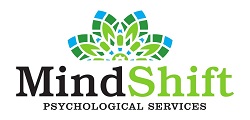Understanding Compulsive Buying Disorder

In the past years, e-commerce has revolutionized how people buy and shop. Online shopping gradually rose into popularity even before the COVID-19 pandemic. At the height of the lockdown, e-commerce sales increased to $815.4 billion from $571.2 billion according to the Annual Trade Retail Survey.
It may seem like an irony given the fact that many people lost their jobs. Online shopping has become a norm for people to cope with restlessness, boredom and anxiety. While it is true what they say about retail therapy, there is still that chance of going overboard which will result in compulsive buying disorder.
What is Compulsive Buying Disorder?
Compulsive Buying Disorder (CBD) is “characterized by excessive shopping cognitions and buying behavior that leads to distress or impairment”. Mental Health America defines it as “an uncontrollable desire to shop which results in spending large amounts of time and money on the activity. Generally, a person who buys compulsively gets the urge to shop in response to negative emotions and often has problems with relationships and finances as a result of their shopping behavior”.
Several medical and health experts do not consider compulsive buying disorder as a distinct mental or behavioral condition. However, it has been discovered that the rush and high feeling during shopping are the same as when abusing drugs.
What are the common characteristics of someone with Compulsive Buying Disorder?
Just like drug addiction, people with Compulsive Buying Disorder manifest specific behavioral patterns. Family and close friends may suspect that something is not right but often dismiss it as a form of a downtime activity or a hobby.
Buy unnecessary things but remain unused or discarded
Max out credit cards or take out loans to shop or pay previous balances
Feel guilty or remorse over purchases but continue shopping
Shop to overcome stress, sadness and loneliness
Steal to buy the things you are currently obsessing
Lie to cover up the truth about your compulsive shopping
Create problems with family and friends over uncontrolled shopping
Unable to pay off debts or manage finances well
Experts believe that it can only be considered a compulsive buying disorder when the person is not diagnosed with other mental health issues like bipolar disorder or hypomania. Some believe that compulsive buying disorder happens because the person is going through a difficult or traumatic event in his or her life.
What are the four stages of compulsive buying?
Not many people are aware that compulsive buying disorder is real and serious. It is harmless and does not hurt anyone. For others, money can always be earned but the happiness they feel when there are shopping is priceless and irreplaceable.
Four stages usually happen that lead to compulsive buying,
1. Anticipation
You may not be able to sleep soundly at night because you are constantly thinking about a specific item that you are longing to buy. It could also be that you are over-excited and fidgety because you are looking forward to an upcoming sale or a shopping adventure with friends.
2. Preparation
You are thinking of the best places to shop that offer the best deals. You come up with a strategy that would help you maximize your time in shopping. The most important thing you do is to plan out how you are going to pay for all your purchases. It could be using all your credit cards or your savings.
3. Shopping
This is the moment you have been waiting for. The high, thrill and excitement are second to none. It is a different level of happiness that you feel while shopping for all the things you like. You tend to forget the world once you step inside a mall or boutique.
4. Spending
You feel sad and disappointed that your shopping is over. When looking at all the things you have purchased, you feel regret because you have spent so much money. You may also feel guilty about buying things that are too expensive for you.

How to treat Compulsive Buying Disorder?
It is hard to determine if you have Compulsive Buying Disorder. Everyone shops. All tend to be compulsive with buying and shopping especially if you have been working hard or saving up for years. Some believe that shopping is a way to relieve stress and fight boredom.
There are self-assessment tests online that you can check to see if you have this disorder. This way you can find ways to manage your shopping addiction early on.
Studies show that Cognitive Behavioral Therapy is one way to treat Compulsive Buying Disorder. This type of therapy helps you to recognize the reasons behind your uncontrolled shopping. This opens your mind to understand how shopping affects your family, friends, relationships or career.
Individual counseling is another effective way to manage Compulsive Buying Disorder. It is believed that this kind of addiction stems from deeper emotional issues or even a symptom of a mental health condition.
Mindshift Psychological Services offer therapy and counseling for people who are struggling with a shopping addiction. Our team of medical professionals will guide you in discovering the causes of this. They will become your aid as you face your issue and develop new and healthy coping skills.
Learn more about all our services through our website. You may also call us at (714)584-9700 to schedule an appointment.



